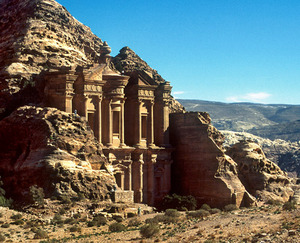Petra may be the treasure of ancient world, hidden behind a nearly impenetrable barrier of rugged mountains, boasting incomparable scenes making it probably the most majestic and imposing ancient site still-standing nowadays.. Common sense says “perhaps there’s nothing on the planet that resembles it”, actually, without a doubt, there’s nothing on the world that resembles it. The rock-carved rose-red town of Petra is filled with mysterious charm, it had been “designed to strike wonder into all who entered it”.
Petra is the most well-known and gorgeous site in Jordan located about 262 km south of Amman and 133 km north of Aqaba. It’s the legacy from the Nabataeans, an industrious Arab individuals who settled in southern Jordan a lot more than 2000 years back. Admired then because of its refined culture, massive architecture and ingenious complex of dams and water channels, Petra has become a UNESCO world heritage site and something from the New Seven Wonders of the world that enchants visitors all corners from the world.
The approach via a kilometer long, cool, and gloom chasm (or Siq) an extended narrow gorge whose steeply rising sides basically obliterate the sun’s rays, supplies a dramatic contrast using the magic in the future. Suddenly the gorge opens right into a natural square covered with Petra’s most well-known monument, The Treasury (El-Khazneh), whose intricately carved facade glows within the dazzling sun.
More facades beckon visitors on before ancient city gradually unfolds, one monument resulting in the following for kilometer after kilometer. The sheer size the town and also the quality of beautifully carved facades is staggering and leads someone to think about the creativity and industry from the Nabataeans who made Petra their capital.
Petra is definitely breathtaking, and not to become forgotten. It flourished for more than 400 years at about the time of Rome and Christ (pbuh), until it had been occupied through the Roman legions from the Emperor Trajan in 106 AD.
The Petra basin boasts over 800 individual monuments, including buildings, tombs, baths, funerary halls, temples, arched gateways, and colonnaded streets, which were mostly carved in the kaleidoscopic sandstone through the technical and artistic genius of their inhabitants.
Petra sights are in their finest at the begining of morning and late afternoon, once the sun warms the multicolored stones, you will see the majesty of Petra since it was seen first when discovered in 1812 after being lost through the 16th century for nearly 300 years!







